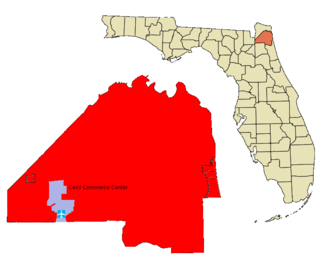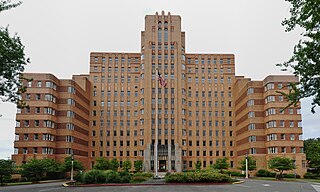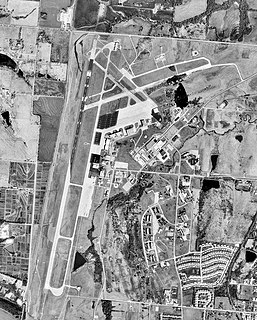Lawrence Livermore National Laboratory (LLNL) is a federal research facility in Livermore, California, United States, founded by the University of California, Berkeley in 1952. Originally a branch of the Lawrence Berkeley National Laboratory, the Lawrence Livermore laboratory became autonomous in 1971 and was designated a national laboratory in 1981.

The United States Department of Energy (DOE) is a cabinet-level department of the United States government concerned with matters of federal energy policy and the safety handling of nuclear material. The DOE is responsible for the U.S. nuclear weapons program, nuclear reactor production for the United States Navy, energy-related research, and domestic energy production and energy conservation.

Honeywell International Inc. is an American publicly traded, multinational conglomerate corporation headquartered in Charlotte, North Carolina. It primarily operates in four areas of business: aerospace, building technologies, performance materials and technologies (PMT), and safety and productivity solutions (SPS).
The Bendix Corporation was an American manufacturing and engineering company which, during various times in its 60-year existence (1924–1983), made automotive brake shoes and systems, vacuum tubes, aircraft brakes, aeronautical hydraulics and electric power systems, avionics, aircraft and automobile fuel control systems, radios, televisions and computers. It was also well known for the name Bendix, as used on home clothes washing machines, but never actually made these appliances.

The Energy Policy Act of 2005 is a federal law signed by President George W. Bush on August 8, 2005, at Sandia National Laboratories in Albuquerque, New Mexico. The act, described by proponents as an attempt to combat growing energy problems, changed US energy policy by providing tax incentives and loan guarantees for energy production of various types. The most consequential aspect of the law was to greatly increase ethanol production to be blended with gasoline. The law also repealed the Public Utility Holding Company Act of 1935, effective February 2006.
Penguin Computing is an American private supplier of enterprise, artificial intelligence (AI), high-performance computing (HPC), software-defined storage, and cloud computing solutions in North America and is based in Fremont, California.
The Reliable Replacement Warhead (RRW) was a proposed new American nuclear warhead design and bomb family that was intended to be simple, reliable and to provide a long-lasting, low-maintenance future nuclear force for the United States. Initiated by the United States Congress in 2004, it became a centerpiece of the plans of the National Nuclear Security Administration (NNSA) to remake the nuclear weapons complex.

Joliet Army Ammunition Plant (JOAAP, formerly known as the Joliet Arsenal) was a United States Army arsenal located in Will County, Illinois, near Elwood, Illinois, south of Joliet, Illinois. Opened in 1940 during World War II, the facility consisted of the Elwood Ordnance Plant (EOP) and the Kankakee Ordnance Works (KNK). In 1945, the two were deactivated and combined forming the Joliet Arsenal. The plant was reactivated for the Korean War and renamed Joliet Army Ammunition Plant during the Vietnam War. Production of TNT ended in 1976, and the major plant operations closed shortly after in the late 1970s. The facility briefly revived an automated load-assemble-pack (LAP) artillery shell operation that was managed by the Honeywell Corporation during the Reagan administration in the 1980s before it was finally closed.

The Bannister Federal Complex was a United States federal government complex at 1500 E. Bannister Road in Kansas City, Missouri. The 310-acre (125.5 ha) complex consisted of 10 buildings at the corner of Troost Avenue and Bannister Road. The complex was occupied primarily by the General Services Administration and the Department of Energy. Ownership of the property was transferred to Bannister Transformation and Development LLC in November 2017.
Honeywell Aerospace is a manufacturer of aircraft engines and avionics, as well as a producer of auxiliary power units (APUs) and other aviation products. Headquartered in Phoenix, Arizona, it is a division of the Honeywell International conglomerate. It generates approximately $10 billion in annual revenue from a 50/50 mix of commercial and defense contracts.

Cecil Commerce Center (CCC) is a commercial and industrial center in Jacksonville, Florida. It is located on Jacksonville's Westside on the former Naval Air Station Cecil Field and includes Cecil Airport. The 17,000-acre center represents more than 3 percent of the land area in Duval County, most of which is zoned for development. The property was conveyed to the City of Jacksonville and converted to its current use between 1999 and 2002.
Fogbank is a code name given to a material used in the W76, W78 and W88 nuclear warheads that are part of the United States nuclear arsenal.
The National Nuclear Security Administration (NNSA) is a United States federal agency responsible for safeguarding national security through the military application of nuclear science. NNSA maintains and enhances the safety, security, and effectiveness of the U.S. nuclear weapons stockpile; works to reduce the global danger from weapons of mass destruction; provides the United States Navy with safe and effective nuclear propulsion; and responds to nuclear and radiological emergencies in the United States and abroad.
CenterPoint Properties is a company that invests primarily in real estate used for intermodal freight transport. The company owns 325 buildings containing 58 million square feet, including the CenterPoint Intermodal Center, the Chicago International Produce Market and the Kansas City Plant. The company is owned by a joint venture between CalPERS and LaSalle Investment Management.

The Chemistry and Metallurgy Research Replacement Facility, usually referred to as the CMRR, is a facility under construction at Los Alamos National Laboratory in New Mexico which is part of the United States' nuclear stockpile stewardship program. The facility will replace the aging Chemistry and Metallurgy Research (CMR) facility. It is located in Technical Area 55 (TA-55) and consists of two buildings: the Nuclear Facility (CMRR-NF) and the Radiological Laboratory, Utility, and Office Building (RLUOB). The two buildings will be linked by tunnels and will connect to LANL's existing 30-year-old plutonium facility PF-4. The facility is controversial both because of spiraling costs and because critics argue it will allow for expanded production of plutonium 'pits' and therefore could be used to manufacture new nuclear weapons.

The Pacific Tower, formerly the Pacific Medical Center, is a 16-story building at 1200 12th Avenue South on Beacon Hill in Seattle, Washington, United States. It was completed in 1932 and opened the following year as a U.S. Public Health Service facility. The lower floors of the facility still function as a medical center today. Amazon.com occupied much of the building as its headquarters from 1999 until 2010. Much of the space was left vacant after Amazon relocated to South Lake Union. In 2013, the state of Washington agreed to a 30-year lease of 13 floors. Seattle Central College subleases six floors for its healthcare training program.

Richards-Gebaur Memorial Airport is a former airport that operated alongside Richards-Gebaur Air Reserve Station until the base's closure in 1994, and until it was closed in 1999. Formerly, it was operated as Grandview Airport from 1941 until it was leased by the United States Army in 1944.

The renovation of the nuclear weapon arsenal of the United States is the modernization, refurbishment and rebuilding of the nuclear arsenal of the United States of America.
The Federal Protective Forces are paramilitary forces of the United States Department of Energy (DOE) responsible for the protection of Category I special nuclear material. Though officially classified as security police, they hold law enforcement status,, while engaged in the performance of official duties. Officers are equipped and trained to respond to serious incidents at Department of Energy facilities by armed adversaries and to reacquire stolen nuclear material. The FPFs have been described, by the DOE, as "elite fighting forces" designed to operate in "combat environments".
The HAF601 is a regulation in the People's Republic of China dealing with the manufacture of safety class equipment for the Chinese nuclear power market. All domestic Chinese firms manufacturing mechanical equipment of Safety Class 1, 2, or 3, or electrical equipment of safety Class 1E, must obtain HAF601 registration before supplying such equipment to a Chinese nuclear power plant. This regulation also applies to international firms producing equipment from a factory within China. For equipment manufactured outside of China and imported into the country, a HAF 604 certificate is required instead. HAF stands for "he anquan fagui" (核安全法) and means "nuclear safety laws" in Chinese. The HAF system has been applied in the China nuclear industry since 2007 and has gradually replaced use of the ASME Stamp system.











